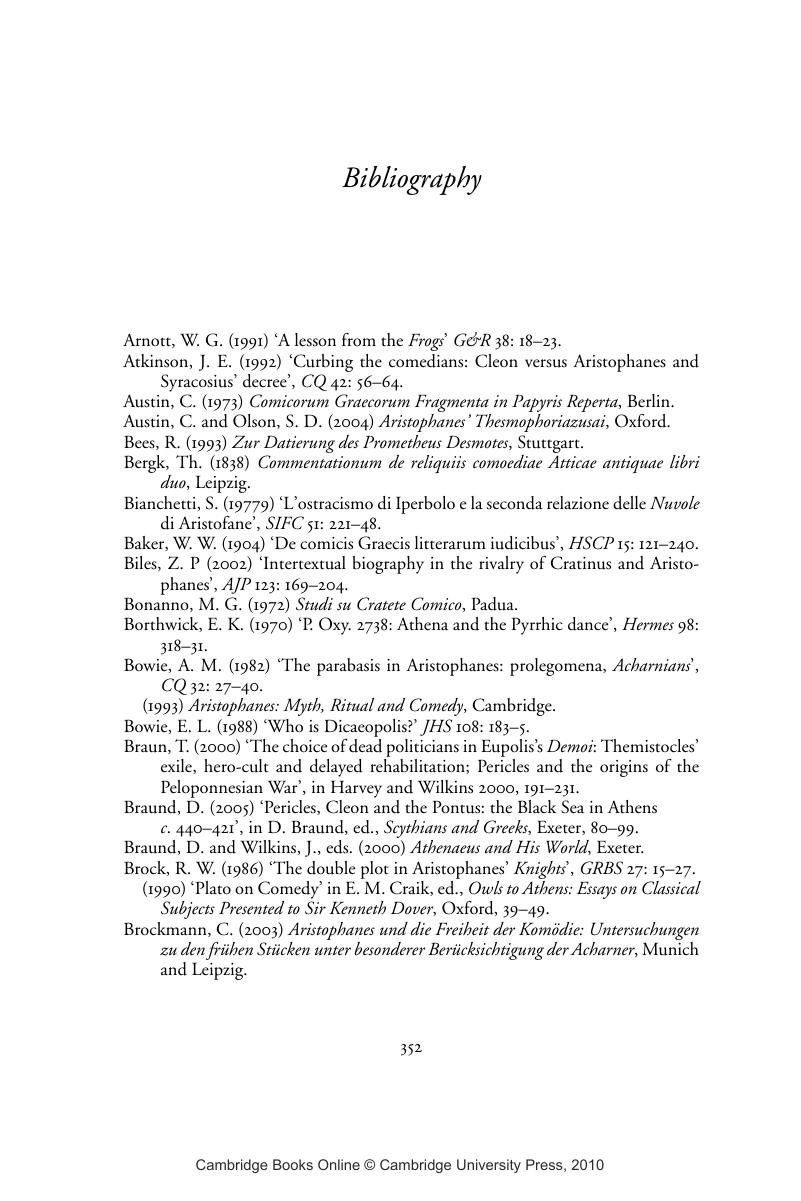Bibliography
Published online by Cambridge University Press: 27 January 2010
Summary

- Type
- Chapter
- Information
- Aristophanes the DemocratThe Politics of Satirical Comedy during the Peloponnesian War, pp. 352 - 362Publisher: Cambridge University PressPrint publication year: 2009



